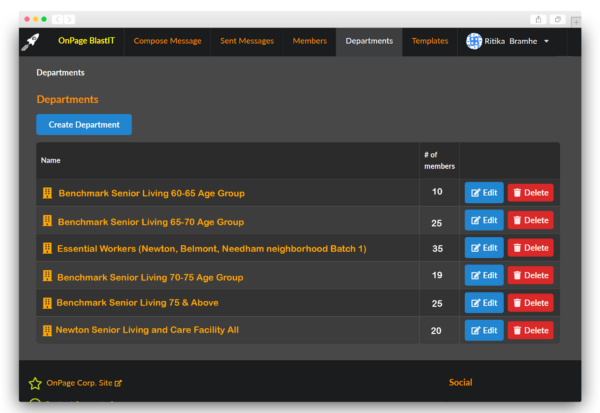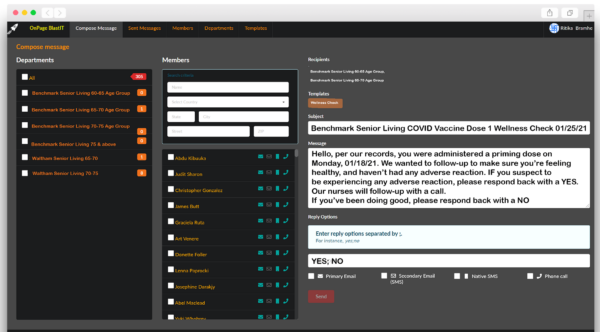The U.S. COVID Vaccine Distribution Plan: Challenges and Solutions

As coronavirus (COVID-19) continues to spread and new virus strains emerge, the public is frantically looking for answers regarding the U.S. government’s vaccine distribution plan. A sound vaccine distribution plan is especially crucial in times like these. All U.S. states, stretching from both coasts, are experiencing a vast number of COVID-related deaths and hospitalizations. The dire situation underscores the importance of having an effective, accelerated vaccine delivery process.
In this post, we’ll discuss everything we know about the COVID vaccine and the health department’s vaccine distribution plan. We’ll conclude the blog by highlighting how healthcare organizations can accelerate vaccine delivery without compromising vaccine efficacy.
What We Know About the COVID Vaccine (So Far)
The Food and Drug Administration (FDA) has approved Moderna and Pfizer/BioNTech vaccines, allowing millions of doses to be available to the public. The U.S. agency approved the vaccines in December 2020.
The fast-tracked vaccine 
This progress, however, comes at a time when infections are surging due to the emergence of new variants, forcing the U.S. government to impose new restrictions on travel and business.
Try OnPage for FREE! Request an enterprise free trial.
The Current Vaccine Distribution Plan
It takes time for manufacturing lines to stabilize, perfect their operational efficiency and meet the manufacturing capacity. Moderna, after experiencing initial delays, has scaled up its vaccine generation. It is expected to deliver over 100 million doses to all U.S. states by March 2021.
Regarding U.S. vaccine distribution, President Joe Biden states, “[There’s] immense challenges ahead, including scaling up manufacturing, distribution, and the monumental task of vaccinating hundreds of millions of Americans. We need to make sure we have the resources to do all of this and to do it quickly.”
To assist the government in meeting its ambitious goal, Amazon has offered its scale of operations to distribute the COVID vaccine.
Healthcare organizations will be at the forefront of vaccine delivery and distribution. The onus is on care teams to efficiently administer the vaccine to patients. Timely vaccination makes the difference between life and death during the pandemic.
Vaccine Distribution Challenges in Healthcare
While the focus is on the manufacturing and distribution speed of the COVID vaccine, we cannot undermine the role of hospitals in ensuring last mile vaccine delivery.
FDA-approved vaccines must be stored in frigid temperatures to preserve their effectiveness. However, some healthcare organizations experienced equipment failures that compromised the vaccines. Accordingly, vaccine delivery was delayed in some cities across the country.
As doses become more available, healthcare organizations must organize vaccine campaigns and notify patients of their scheduled vaccination times. To simplify this process, hospitals require a solution to communicate with patients and inform them of their COVID-related treatments.
According to OnPage Health Director Britton Davis, “Hospitals must prioritize those that fall within a specific age bracket or occupation. They need to receive real-time appointment reminders and messages on post-vaccination care. Immediate hospital-to-patient communication makes all the difference in today’s global health crisis.”
Try OnPage for FREE! Request an enterprise free trial.
Technology To the Rescue
To gear up for what could easily be dubbed as the largest vaccine distribution plan of the decade, U.S. hospitals need to implement a three-pronged approach.
The first pillar focuses on safeguarding the effectiveness of COVID vials when stored. This can be achieved by complementing cold storage built-in alarms with OnPage’s critical alerting solution. When temperatures shift, storage alarms will trigger an OnPage alert to the technician’s phone and ensure the incidents are resolved promptly.
Second, healthcare organizations must invest in a mass notification system that improves hospital-to-patient communications. An effective system broadcasts messages to recipient groups via different channels (e.g., email, phone and SMS). Patients can receive appointment reminders, rescheduling notifications and wellness check messages. Mass notification solutions create communication efficiencies and speed up vaccine deliveries.
Last, hospitals require systems that supplement post-vaccination care. Dedicated phone lines and live calls allow patients to connect with their physicians in real time. Physicians can get live feedback from patients and keep track of their health through follow-up calls.
“OnPage live call routing can be used as a dedicated helpline for those who want immediate, post-vaccination assistance,” suggests Davis. “Patients have 24/7 access to physicians should something go wrong.”
Conclusion
As COVID continues to spread, it is critical that healthcare organizations are well prepared to speed up vaccine delivery. The three-pronged approach solidifies vaccine campaigns and complements alerting during storage-related incidents. OnPage’s mass notification platform enhances mass messaging and improves the speed of vaccination delivery, all while providing a slight sense of relief during these uncertain times.







